Posterior Horn Medial Meniscus Tear
Read More >
Tears to the medial meniscus are common when it is over-stressed with rotation or sudden changes of direction or speed of the knee joint and with deep flexion. Many different types of tears can occur, more about this can be read in our article: Posterior Horn Medial Meniscus Tear.
Using ice will be an effective way to manage pain in the acute or inflamed phase. Sometimes medications such as antiinflammatories will also be recommended.
Some forms of tears will need surgery but most can be managed conservatively with physical therapy and rehabilitation exercises. With good treatment and rest, most will heal and become pain-free.
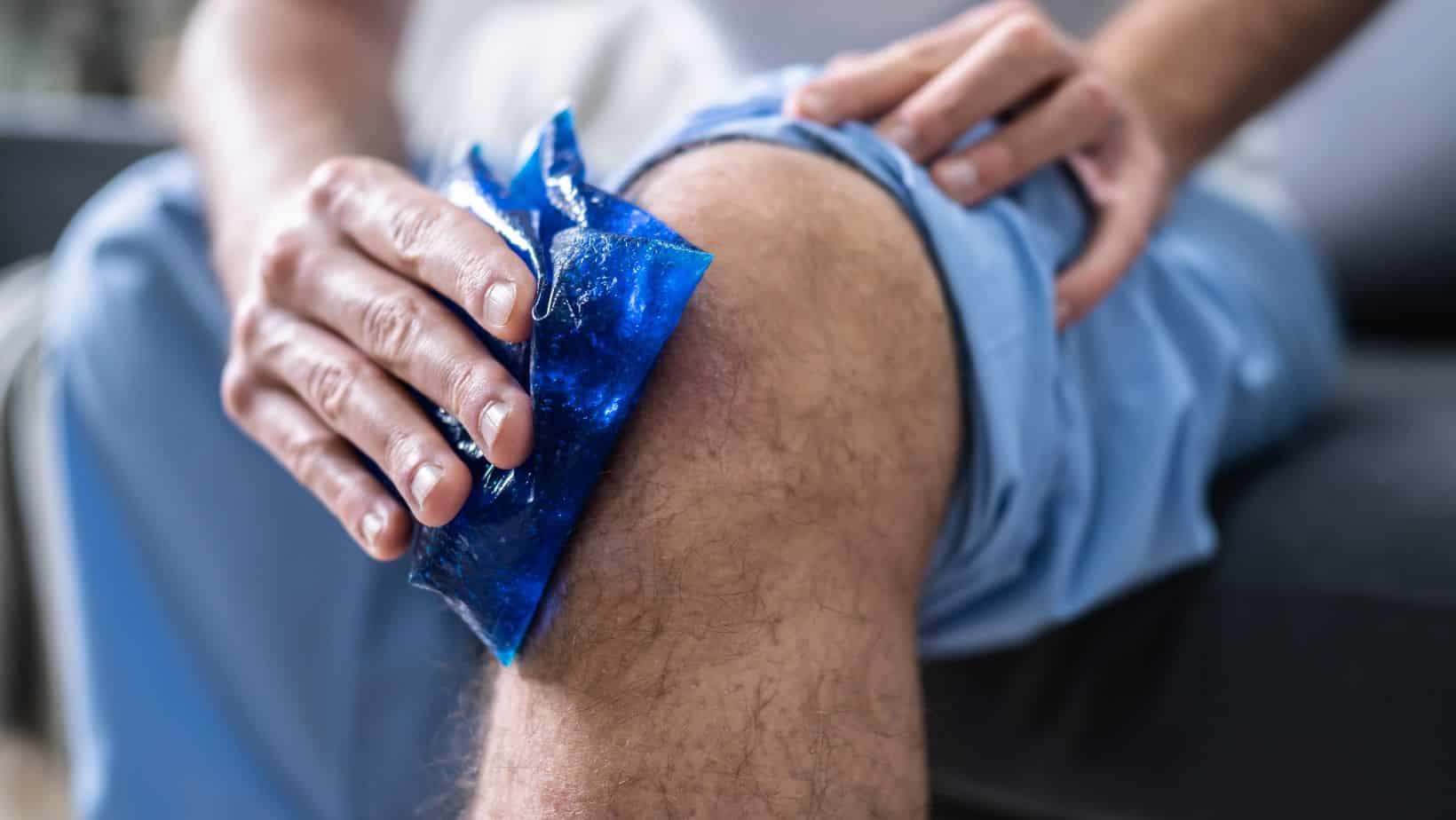
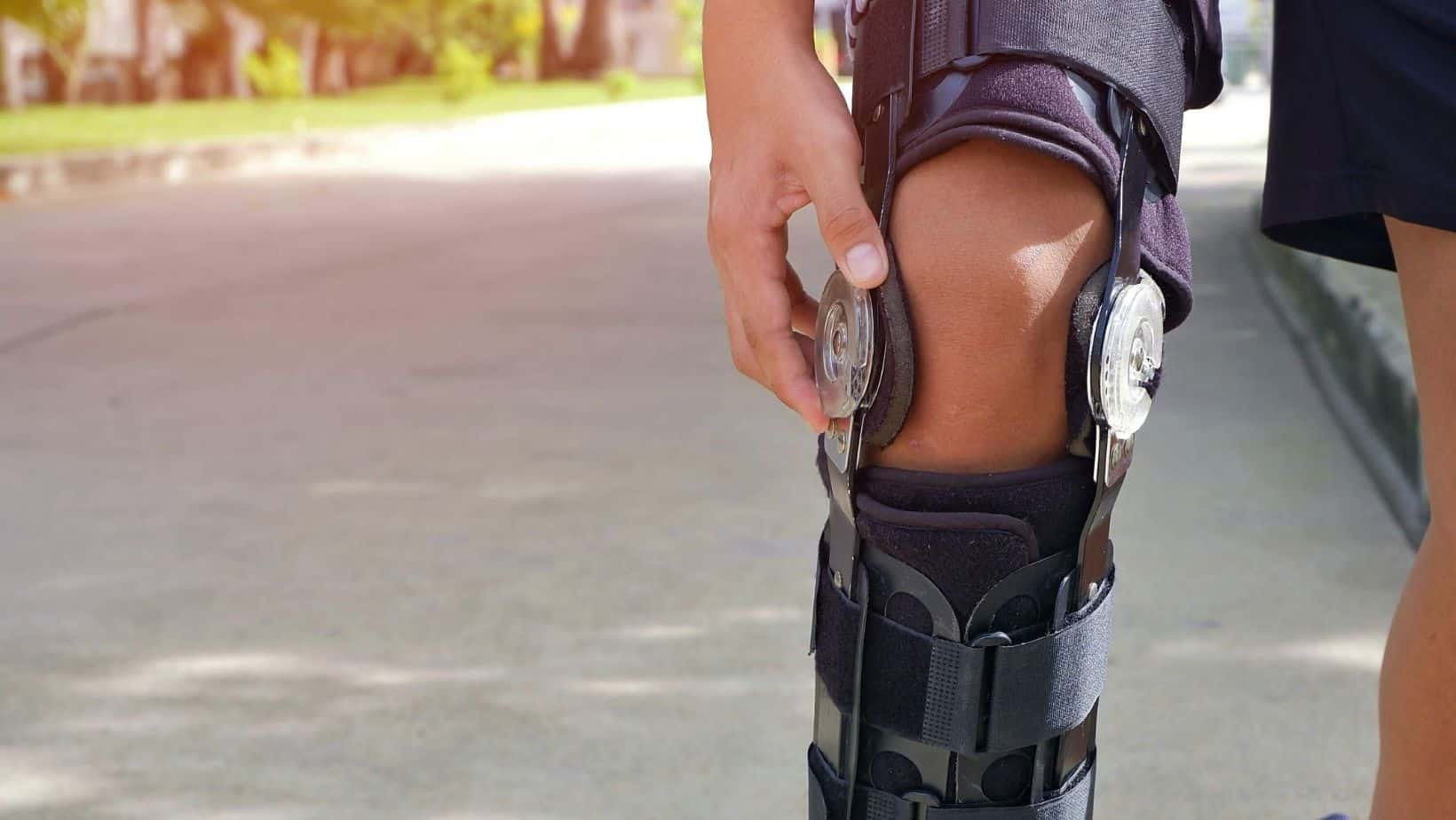
Recovery without surgery can often benefit from the use of a knee brace for some time to reduce the load on the injured meniscus. Please read more about our recommendations in our article: Knee Brace for Meniscus Tear.
When the meniscus is torn and the knee is painful and possibly swollen the surrounding muscles can become inhibited and need activating with strengthening exercises. Here are some examples of the best exercises for recovery from a medial meniscus tear.
These should all be pain-free and done for about 3 sets of 12 repeats.
Sit with a foam roller or thick pillow under your knee. Push your knee down into the roller or pillow to straighten your leg and lift your ankle off the floor.
You should feel this working your quadriceps muscles.
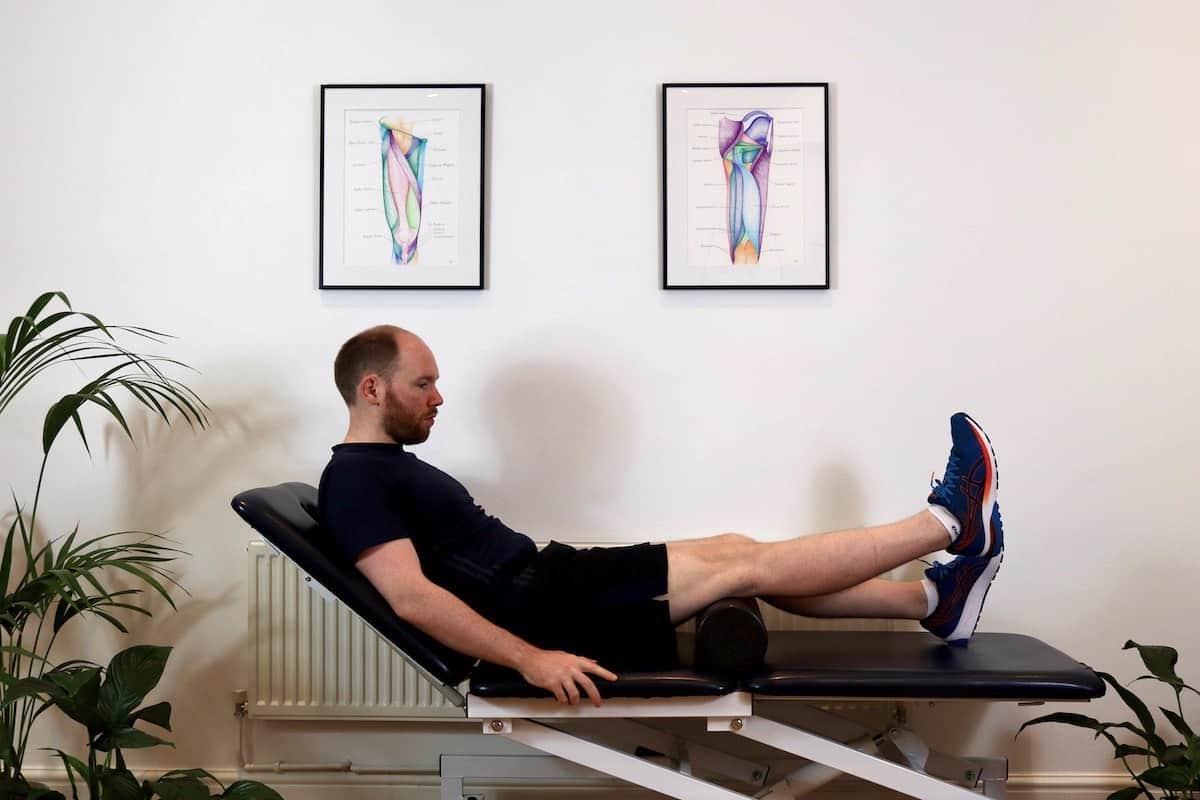
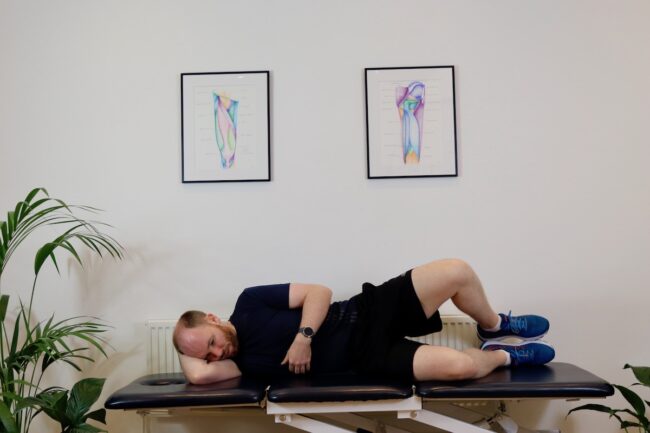
Lying on your side with your heels in line with your hips and shoulders. Without rolling backwards with your pelvis, lift your top leg to open your knees.
You should feel this working your glute muscles.
Lie on your back with a resistance band tied around your thighs, and your feet and knees hip-width apart. Keep pressure outwards into the band while you lift your pelvis off the floor.
You should feel this working your glutes and hamstring muscles.
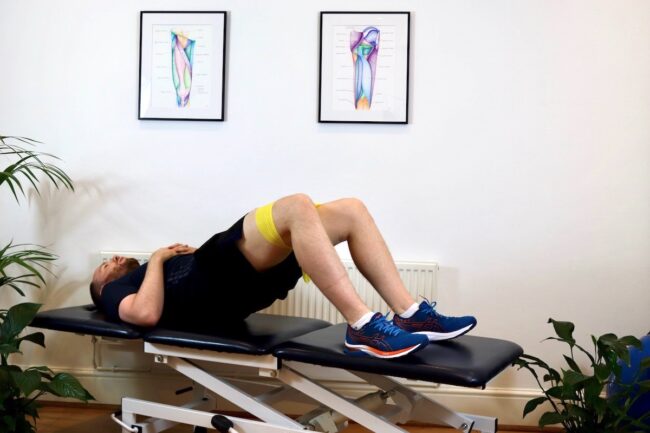
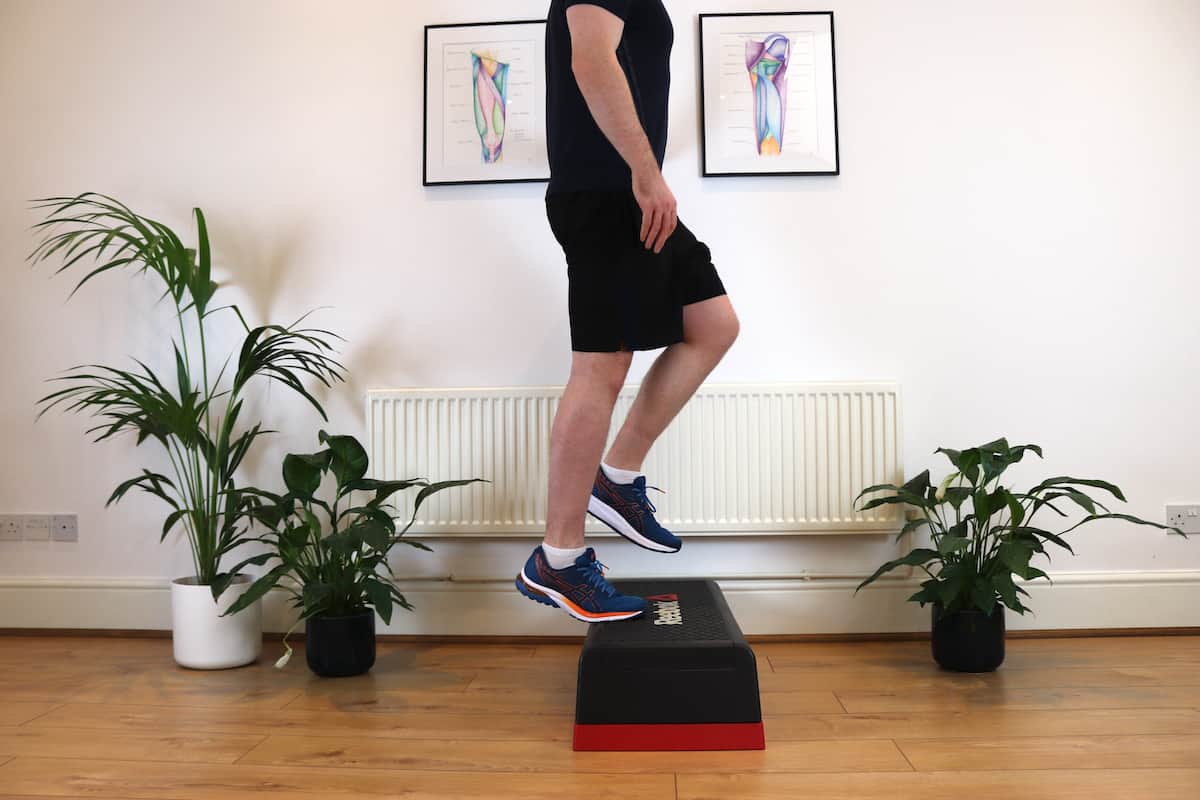
Stand with the ball of one foot on the edge of a step. Hold onto a wall for balance. Lower your heel down off the step and then raise your heel high up.
You should feel this working your calf muscles.
The muscles around the knee often tighten when there is an injury to the meniscus and pain at the knee.
Therefore, stretching the hamstrings and calf can be very helpful in reducing pain. Often stretching the quadriceps muscle is painful as the knee is taken into a fully flexed position, where it can pinch the meniscus. We therefore recommend using a foam roller to relax the quadriceps muscle without the need for flexing the knee.
Stretches should be held for at least 30 seconds and 2-5 minutes spent on the foam roller.
Stand with one leg and step forwards with a straight knee. Bend from your hips to tighten the muscles at the back of your leg.
You should feel this stretch in your hamstring, at the back of your thigh.


Stand with both feet on the edge of a step. Hold on for balance and lower your heels down.
You should feel a stretch in your calves, at the back of your lower leg.
Lie with your thighs on a foam roller, you can either hold your weight with your hands or forearms on the floor. Very slowly roll your weight forwards and backwards over the middle and outer part of your thigh.
You should feel this slowly become less painful in the quadriceps muscle.
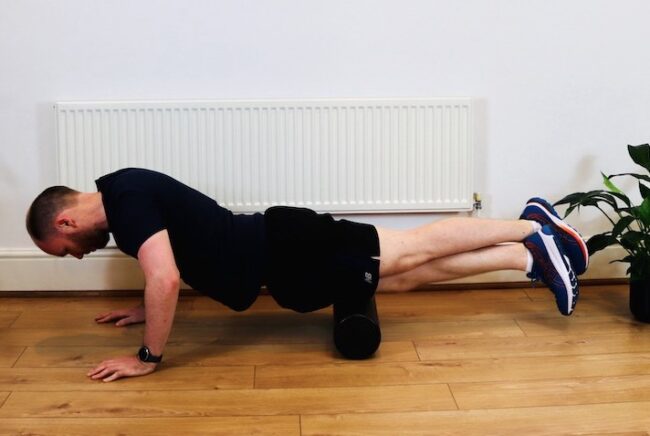
Continuing with some cardiovascular exercise while injured is important for health and circulation. However, high-impact exercises such as running and sometimes even low-impact exercises such as walking will irritate the injury and increase pain and swelling.
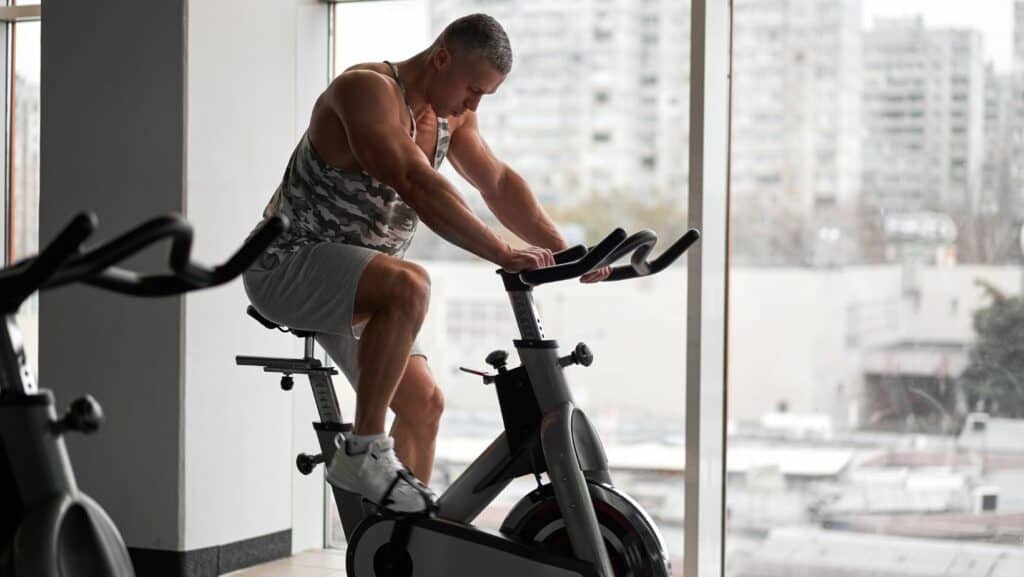
If walking is pain-free and there is no swelling that develops after then it is ok to continue with this in moderation.
We therefore recommend a non-impact exercise to maintain fitness. Cycling is a great exercise that is usually pain-free. It is also a good way to build strength and endurance in the quadriceps muscle which can help with recovery. An alternative to cycling is using a cross trainer or elliptical machine.
This article is written by James McCormack, a Lower Limb Specialist who is an expert in treating Knee pain.
This is not medical advice. We recommend a consultation with a medical professional such as James McCormack if you are experiencing any of the symptoms discussed in this article. James offers Online Physiotherapy Appointments weekly and face-to-face appointments in his London clinic.